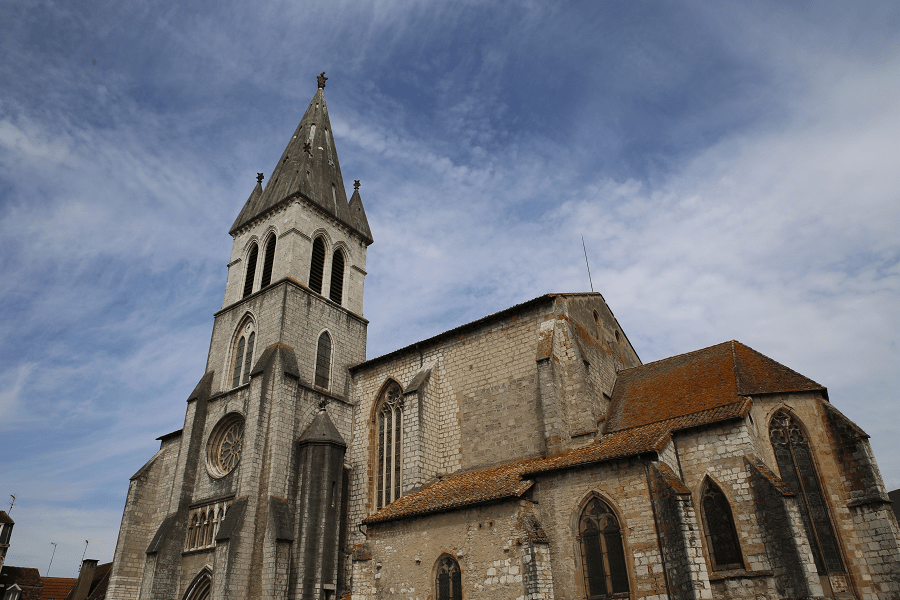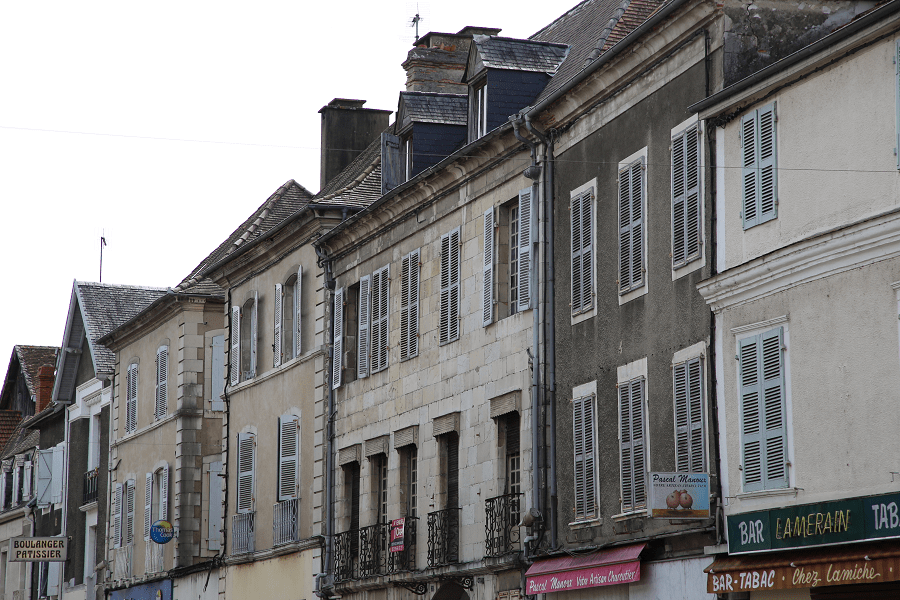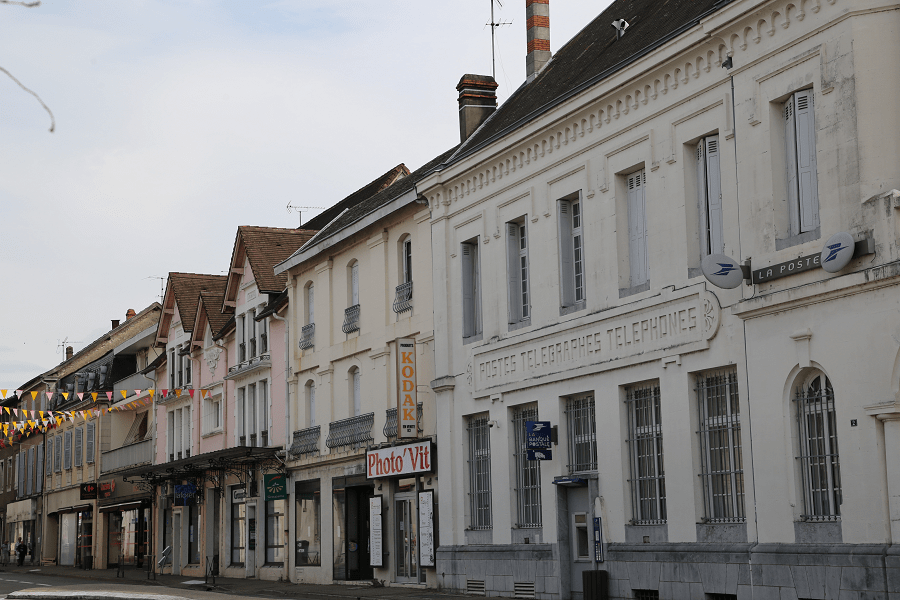Orthez is a town in the French department of the Atlantic Pyrenees (Pyrénées-Atlantiques), located on the Gave de Pau’s right bank.
“Touch if you dare” (French “Touches-y si tu l’oses”) is Orthez’s motto, which testifies to a rich and eventful history. Its cultural heritage and landscapes testify to a double essence – from the medieval fortifications rigidity to the tiled roofs softness and comfort.
The town of Orthez dates back to the Middle Ages. Orthez switched from Viscounts of Dax to Viscounts of Bearn at the end of the XII century, Viscount of Bearn, Gaston VII de Moncade made it his residence in 1242. He endowed the town with its main attractions: the Moncade Castle (Château Moncade) – a 10-minute walk from the town center – and the Pont-Vieux bridge.
Orthez developed in accordance with the town’s plan and has remained almost unchanged since then. The center resembles a number of other thirteenth-century towns: Bourg-Vieux, Moncade, and Bourg-Neuf.
The town was also famous thanks to the Gaston III de Foix-Béarn personality, also known as Fébus, whose main residence was the Moncade castle. Fébus was not only a formidable commander but also a politician imposing Bearn’s independence. He also went down in history as the author of the famous hunting book (Livre de chasse).
The Kings of Navarre (Spain) moved their capital from Pamplona to Orthez after the Spaniards occupied South Navarra. Jeanne d’Albret, Queen of Navarre, established a Calvinist university where Theodore Beza, the Swiss reformer, associate and successor of Jean Calvin taught.
Orthez owes its growth to commercial activity, which has been developing actively since the eighteenth century. The smoked meat, flax, and wool trade brought a good income, as evidenced by the houses and mansions from that time.
Orthez has long attracted creative intelligentsia and even scientists: the French physicist Gaston Planté, the French symbolist poet Francis Jammes, the French prose writer, and essayist Jean-Louis Curtis, and the French pianist Francis Planté all lived here.
Orthez’s Museums
Jeanne d’Albret Museum, the History of Protestantism in Béarn. The house museum is rightfully considered as one of the most beautiful in Bearn. It is located in the centre of Orthez. It refers to the 15th-16th-century era’s architecture. It is a historical monument.
The museum contains materials on the history of Protestantism in Bearn. Discover the four centuries of Bearn’s history, as well as the origins of the Reformation (the wide religious and socio-political movement in Western and Central Europe of the 16th – early 17th centuries, aimed at the Catholic Churchreforming).
Follow the Huguenots’ travels to the rhythm of the Bearn and France’s events with Jeanne d’Albret and her children Henri IV and Catherine de Bourbon, Elisée Reclus, Félix Pécaut, Eugène Casalis, and Albert Cadier. The museum is the culmination of a collection compiled by the Bearn Protestantism Studies Center since 1987. Here there are manuscripts, printed materials, books, objects, and films.
Poet Home: Chrestia House (la Maison Chrestia). Chrestia House is an eighteenth-century architectural complex. The poet Francis Jammes lived there from October 1897 to December 1907. Many poets’ manuscripts are kept here.
Art Center (Le center d’art image). This centre is dedicated to the art of making feature films, videos, multimedia, and graphics. Its area is 250 square meters. It regularly hosts exhibitions and art workshops.
Tourism and the main architectural sights of the town
Saint Pierre Church (Église Saint-Pierre). The first written records of this church date back to 1260. Built outside the town square, the church had its own fortified enclosure. It is known that the church choir was restored between the end of the 13th and the beginning of the 14th century. Saint Pierre Church is a rare example of the southern gothic style usage in Aquitaine.
Old Bridge (Pont Vieux). The old bridge is a “pearl in a frame” with its tower and arches. It was built between the thirteenth and fourteenth centuries, under Gaston VII de Moncade, when he declared Orthez to be the capital of Bearn capital brought his court there. This fortified bridge is one of the few crossing points in the border zone that allows pilgrims to travel along the Santiago de Compostela route and carry goods at any time of the year. Pont Vieux has been depicted on the town emblem from the 13th century and remains a symbolic monument to this day.
Moon Hotel (Hôtel de la Lune). This is an “inn under the sign of the moon”, the place where pilgrims stop today, following the Santiago de Compostela path. The French historian, the XIV century writer, and poet, the author of the famous Chronicle, the most important source on the Hundred Years War initial stage’s history, the chronicler Jean Froissart, lived here during his stay in Orthez in the winter of 1388. The building’s architecture suggests it belongs to the 13th or 14th century.
Moncade Vine (Vigne de Moncade). The town of Orthez has a wine heritage that allows the Moncade tannat (red) and Moncade Raffiat (white) wine production. Moncade vineyards are part of the Orthez municipal heritage: they occupy about 1.3 hectares. Moncade Raffiat is an extremely rare white grape found only in the Orthez-Salies sector. Its other name is roulette. Wine from this variety was especially appreciated at the Gaston Fébus court.
Pesqué Bullring (Pesqué). The arena was opened in 1927. It can hold up to 4000 people. Concerts are held in the arena now.
Moncade Castle (Château Moncade). The estimated construction date is 1242. Gaston VII built the castle in a strategic location – on a hill at an altitude of 100 m above sea level. The castle was the sumptuous Gaston Fébus residence, who completed the fortifications in the fourteenth century. The castle was badly damaged when the French took refuge in it during an attempt to annex Bearn in 1569. The castle became the French crown’s property in 1620. However, since its maintenance was too expensive, it was deserted and abandoned.
Trade fairs and festivals
Fairs have been held in the town since the 14th century. The tradition to organize a book fair has survived to the present day – for three days a year, this cultural and social event hosts the most famous authors.
Restaurants
The best restaurants: Restaurant-An-Nam-Orthez (Vietnamese cuisine), La Cuisine à Musée (French Cuisine), O’Garage (French Cuisine, grill), Restaurant Brasserie Corral Café (International Cuisine), and Le Hong-Kong (Chinese Cuisine).
Shopping
The town hosts a market every weekend, where you can buy both the freshest local products (cheese, wine, vegetables, fruits, meat), as well as clothes and shoes.
How to get there?
Shortest distances by car:
From Biarritz (tolls): 58 min (85.9 km) via A64
From Dax: 39 min (37.9 km) via D947
From Nantes (tolls): 5 h 9 min (575 km) via A83, A10 and A65
From Saumur (tolls): 5 h 12 min (534 km) via A10 and A65
From Bordeaux (tolls): 2 h 15 min (235 km) via A65
From La Rochelle (tolls): 3 h 50 min (412 km) via A10 and A65
From Toulouse (tolls): 2 h 15 min (231 km) via A64
From Carcassonne: 3 h (318 km) via A64
From Monaco (tolls): 7 h 31 min (807 km) via A8 and A64
From Nice (tolls): 7 h 19 min (785 km) via A64
From Cannes (tolls): 7 h 4 min (758 km) via A64
From Saint-Tropez (tolls): 7 h 3 min (731 km) via A64
From Marseille (tolls): 5 h 49 min (628 km) via A64
From Avignon (tolls): 5 h 5 min (554 km) via A9 and A64
From Montpellier (tolls): 4 h 22 min (467 km) via A61 and A64
From Béziers (tolls): 3 h 46 min (405 km) via A61 and A64
From Perpignan (tolls): 3 h 58 min (431 km) via A61 and A64
From Narbonne (tolls): 3 h 30 min (375 km) via A61 and A64
From Andorra (tolls): 4 h 21 min (350 km) via A64
Main information
Area: 31.4 sq. km
Coordinates: 43 ° 17′41 ″ s. w. 0 ° 22′29 ″ s d.
Population: 81,190
Languages: French
Currency: Euro
Visa: Schengen
Time: Central European UTC +1


































